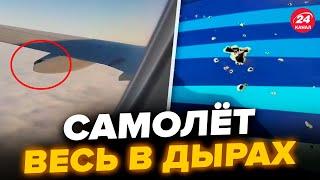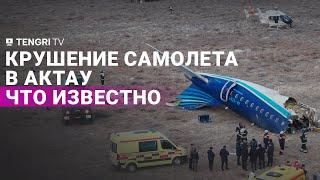
Why I Haven't Flown To IFR Minimums In Years
Комментарии:

Thank you Jason. Every GA pilot should watch this. I'm a private pilot with instrument and commercial ratings, but I'm also an Aviation Medical Examiner. I see a lot of professional pilots (part 121 and 135) and I like to ask them what their personal minimums are for IMC approaches when flying single pilot GA. I have yet to meet even one who will plan to fly an IFR approach when the weather is anywhere near minimums. The risk is too high and the margin for error is zero. Most have personal ceiling minimums of 1000 to 2000 feet, and many say they never plan to fly solo pilot IMC at all. They all make the same point you did - there is never a reason to plan to fly anywhere solo GA when the weather is at or near minimums.
Ответить
Interesting...... I find my personal minimums is having everything go to plan and staying within my competence. I do an approach I am competent on, not just current. I only do flying I am competent on.
When I get to minimums and no visual, I go missed, evaluate and often land at my alternate, always an awkward unwanted destination. This is the adventure of flying. I just love it...... and never have had, get there itis.
When I was in USA many years ago getting a twin rating my instructor said have you flown into a CB. I said no. He said you will die the first time if you do. There was a sqawl line of CB's and he took me straight in on a July day. It was like being in a washing machine. Bringing the speed right back so the wing was stalling occasionally. Keep calm, I had to keep flying, just aviate. We flew back out. Really horrific.
Best training I ever had as weather in my country not available on devices like USA. Despite my best efforts I have since inadvertently struck CB's and VMC rotor that would have been lethal.

I suppose it’s a wise decision to maintain fairly high minimums if you don’t fly in IMC very often - especially in single-engine GA airplanes. I will most likely adopt that policy if I ever get to that place in life. But for now, even after retirement, I’m still flying those doggy night freight Metroliners which are devoid of autopilots; needless to say, hand-flown approaches to minimums in all kinds of weather are a monthly requirement - if only to maintain sharpness. And I must admit, it is quite satisfying to know that if needed, I can fly a precision approach to 200’ in a direct crosswind of forty knots or greater. But I’m with you: if I was no longer required to execute such foolishness for continued employment I would simply let it all go into the dustbin of history. And at my age, that time is not far off.
Ответить
Over the past couple of months, I planned three trips flying my 182 to different cities on business. On all three, 2-5 days ahead I booked on commercial. A couple little things called hurricanes and tropical storms influenced the forecasted weather at origin, destination, flight path and in some cases all three. On each trip after getting there and seeing the weather, I said " I could have made it. Not as bad as I thought it was going to be." Yada yada Yada.... forecasts are always worse that actual..... But I was cautious on each successive city not to let that previous assessment affect me and convince me to take more risk on the next trip. Absolutely agree, if you do it right, you don't have to fly down to mins. I haven't done it since leaving the military 20+ years ago.
Ответить
It has been 30 years since I have flown to IFR minimums in a single engine plane. One experience was in a PA32-300. The ceiling was just above ILS minimums with moderate rain. At the time I felt very proficient and I thought nothing of it. As I gained experience (got older) I view those types of approaches very differently. The risk involved in a single engine aircraft is too great. I have been flying since 1977, and in my years I have learned that engines can fail suddenly. As they say, there are old pilots and there are bold pilots, but there are no old bold pilots. Please fly safe.
Ответить
Retires airline guy here with around 30,000 hours. I fly single engine airplanes now and love it! It my personal minimums, if I am proficient, is 600 and 1. Reason, one engine!
Ответить
I just got my private license a few weeks ago and I've started working on my instrument. Thanks for this video. This reminds me the phrase "I use my superior decision making skills so I don't have to use my superior piloting skills". Someday I'll get to use this phrase in talking about myself.
Ответить
Great video and great point to have personal minimums that are significantly above the IFR minimums. Last time I flew to actual minimums was during training with a CFII, the Canadian fire had the NE blanketed in smoke to right at minimums for a LNAV MDA of 900ft.
Ответить
It’s dangerous. Seriously dangerous. Personal minimums should have you way above FAA minimums.
Ответить
Good advice.
Ответить
Great topic...I see your point, if you don't have the ability then don't do it. But at the same time if don't do it you'll never learn the ability to do it. A catch 22
Ответить
I'd seriously need to search for actual approaches, but I agree, and was having that very same "if you have to be there" conversation with two of my CFI candidates Monday. When I was working on my Instrument Rating, my CFII did have me shoot an approach that we knew we wouldn't get in on. That is an experience, but it was fog, not anything convective. I've done hard IFR, single pilot, in a 172...nope, not again.
Ответить
I'm an 800 hour private pilot with an instrument rating, current and proficient. I completely agree with you. I'm a doctor and I fly to a couple of other cities for work. I know that people think all doctors are rather egotistical and reckless but that's not always the case. First of all I don't own a bonanza. I fly a Cessna 182. My personal minimums are 1000 AGL. I don't fly when there's even a hint of possibility of convective activity or icing and I don't fly through fronts. The only time I fly to minimums is when I'm In VFR conditions under the hood practicing instrument approaches. My destination airport and my alternate airport have to be within my personal minimums or I don't fly. I always leave myself enough time to drive or fly commercial if necessary. There have been a few times when I flew half way, landed at another airport and grabbed a rental car because conditions changed. I always leave myself an out. Good video and thank you.
Ответить
Fully agreed. This is the sensible way to fly single pilot GA airplanes.
Ответить
Heck yes agreed 100 percent
Ответить
Same here. As a private pilot, the only reason why I got my instrument rating is to be a safer pilot and in case I encountered unexpected IFR condition and need to return or land. I will never enjoy flying in actual IFR condition.
Ответить
Never have flown to minimums, have no intentions of trying without a CFII. Actually the timing of my training and local airport approach issues have meant all my time has been simulated and I’m waiting for my local approaches to be recertified so I can get actual with an instructor before I go up in actual solo. There’s no need for my first time in actual to be solo or with passengers.
Ответить
Flying part 135 we flew down to minimums often in the winter. Ice and snow? No big deal. The plane was approved for flight into known ice. I was extremely proficient. That said, there is no way I’d do it in a GA aircraft!
Ответить
After watching this, I am glad that I had a furloughed Pan Am pilot as my CFII back in 1973. Oh and I am an ex freight dog, flying Navajos at night.
Someday the “I only fly down to 500 and 1” pilots may find themselves in the receiving end of a TAF which wasn’t accurate and get a rude awakening

Working towards my instrument rating coming back to the home airport KILG the trip was actual IFR like a 300-Foot ceiling all the way.. Route was from ILG to KMFV back to KILG....It was a walk in the park credit towards my CFI at the time, Mary Allen
Ответить
Before my first flight with my instructor, I explained that I have one rule I live by and will not break for him or anyone else: fly safely and make good decisions because I want to fly again tomorrow and I won't let anyone or anything interferre with that!
I'm a Sport Pilot, not licensed to fly at night. Yet immediately after my checkride for Sport Pilot, I told my instructor that when it was convenient with him that I wanted to spend a few evenings learning to takeoffs and landings, specifically landings! I explained to him that if I ever screwed up and needed to land at night, that I didn't want my first night landing to BE my FIRST NIGHT LANDING! ! ! We went out 3 evenings and with different airports and airfields and I practiced until he thought I was compentent and could safely land the plane at night.
I've watched enough videos of IFR rated pilots flying and dying that once again, I want to find an CFII to get me comfortable using only instruments to get down safely. NOT to fly in IMC to begin with, but if I ever find myself in IMC I want to know that I can keep the wings level, turn slowly and safely and back track at 180 degrees. We teach students to deal with stalls, and explain about spin awareness and to never attempt to do the 180 degree impossible turn back to the airport on takeoff. I'm just taking it to the next step which is being prepared if I screw up and getting out of it safely.
Loved this video and I agree with you 100%. Keep making the videos and we'll all keep watching them and learning.

A thousand times yes. This is such excellent advice. Hope to see you again at the next aviation event, Jason.
Ответить
Excellent advice to fly, and live by.
Ответить
I never have flown to minimums-lowest was 600 agl
Ответить
You've mentioned a low time private pilot flying to minimums in a C172 in IMC.
How come you don't?
I've done it once, last year in a C172, solo, as a 700 hour commercial pilot, with almost zero wind, zero turbulence, and to an airport to which I've been at least 10 times. I wouldn't have done if it would have been gusty or I'd have a non pilot with me.
I'm now a CFI/CFII with over 1000 hours. Any recommendation for what should be my cutoff with an instrument student?

My IFR check ride was in a Beech 76 Duchess. Not a high performance twin but a twin nevertheless. It was the most intense and mentally exhausting check ride of my entire flight training (PPL to CPL, etc). We were in IMC from wheels up until hood off GUMPS and landing. Literally we landed seconds after removing the hood! Down to IFR minimums. It was incredibly rewarding. IMC the entire check ride and.....I would never do this on my own in even a 172. It took all of my training and skill to pass the check ride and I would never replicate this on my own. Yet, the training was critical because I knew how to fly confidently and trust my instruments. I also appreciated the value of not pushing the limits of my ability, knowledge and skill if at all possible. As the saying goes: better to be on the ground wishing you were flying than in the air wishing you were on the ground. Stay safe and DO NOT PUSH YOUR LIMITS! Eventually you will wind up a statistic!
Ответить
Definitely agree, the best thing you can do at any level is to leave yourself a way out. Whether that's an alternate aerodrome, route, method of navigation, whatever, always being able to say, "hey, this isn't working I'm going to do something else" is a huge bonus to safety.
If you are in weather where you can barely see your own hand in front of you, you are going to have very few outs. Luckily we have some great technology in the modern age to give us some more, but always have an answer for what you're going to do if X fails.

Well said, Sir. Sometimes, my IFR students are surprised to learn that my personal minimums are higher than the legal IFR mins. I explain that legal is not necessarily smart. They need to understand that we should never just go blasting off into dangerous conditions, just because we can. I want to lead by example and teach students to make safe decisions. 200' mins? No thanks!
Ответить
I’ve learned that what might be legal may not be safe. It’s 500-3 for me.
Ответить
I could not agree more. Keep up the good work!
Ответить
It's tough in S. Florida. I can't remember a time when the ceiling was at or near minimums - at least not without significant convective activity.
Ответить
My favorite video of you, except for the time where they gave you a squawk code and changed it shortly thereafter, is spot IFR over OCF
Ответить
I only fly to minimums in the simulator.
Ответить
I used to live in Florida and on those rare days when it would be raining all day, I would call my instructor to go flying. Flying in actual IMC is very good practice. It paid off a couple of times.
Ответить
I posted a video recently detailing a trip where I was stranded by low ceilings, solid IMC with embedded thunderstorms, and high winds (exceeding my plane's crosswind component). The ceilings at my airport of departure were lower than the minimums I would need to get back in if needed, and the nearest airport with an approach was 60+ miles away. I elected to stay in a hotel for a couple days, and when the weather system didn't clear up, I rented a car and drove the 8 hours home. A few days later, I returned with the rental car, and flew my plane home.
And yet...I had MULTIPLE pilots make comments on my video, "why didn't you just file IFR and go?" Seriously??
I totally agree with what you're saying. As a 21 year old commercial/IFR pilot with only a few hundred hours, I did some approaches close to minimums, because that's what I was certified to do, right? Now, 30 years later, I will not do single pilot approaches to minimums. MY minimums are much higher than approach minimums.

I got my instrument rating to save my butt if something goes wrong. I have flown single pilot IFR once!
Ответить
There is a point where you really stand out among the croud and the million other channels on aviation. You add the "be wise, be smart, be safe" factor into aviation learning, proficiency and operation. Other than technicalities on how to fly and control an airplane, the decision making behind taking-off or not - including subjective factors not taught on flight school can never be undervalued. Great work.
Ответить
Hi Jason, I appreciate the subject of your video. Fascinating insight on our end to see someone with as much experience as yours and your approach to flying IFR. Maybe you could do another video on the best way to stay IFR current. I got my instrument rating two months ago and went straight into commercial training. I can't believe how fast time has passed, but I haven't done a single IFR approach, hold, etc.. since then, and now I'm starting to sweat about staying current. A video covering the best ways to do this would definitely be helpful. Thanks in advance
Ответить
Well, yeah. Flying a bug smasher down to a 300 foot LPV minimum sounds like an awful idea in the weather. You’d be getting your ass kicked the whole time, unless it was fog or something in the summer.
Flying an approach to minimums in a PC 12 or 24 isn’t that much, it has the technology and ability to penetrate pretty well.
I wouldn’t fly a small 2000 some lb prop plane to mins, but a properly equipped turbine? Sign me up if it’s not convective or severe icing

Great video. Thanks for doing these Jason! I’ve gone down to very close to minimums but like you said it’s really not necessary and mostly the situation doesn’t even come up, but honestly even waiting and hour or so in those times typically changes from minimums to something better. You never have to be anywhere!
Ответить
Great video. Thanks for doing these Jason! I’ve gone down to very close to minimums but like you said it’s really not necessary and mostly the situation doesn’t even come up, but honestly even waiting and hour or so in those times typically changes from minimums to something better. You never have to be anywhere!
Ответить
So awesome thanks great video
Ответить
Wise decision. I've been flying GA for several decades. About 15 years ago, I experienced something which put me off the idea of single-pilot IFR forever. My wife and I were at Universal City in LA on a tram ride through the park. The tram stopped dead still in a cylindrical tunnel the inside of which was painted white with a black helical stripe down the length of it. The tunnel started rotating around us...the tram remained stationary. Within seconds my head slammed down onto my left shoulder and I was unable to lift it vertical using all my strength. I was paralyzed in that position until the tunnel stopped rotating. Being a pilot, the potential ramifications of this phenomena did not escape me. Survival depends on more than just flying the instruments. It doesn't help if you're paralyzed. Spatial disorientation can lead to physical incapacitation (paralysis). I'm glad I learned this lesson on the ground.
Ответить
Great perspective. With my instructor and under the foggles I’ve flown to minimums EVERY time. But will I when it’s real IMC? Like you said, I can’t imagine when that would be “necessary”.
Ответить
Excellent video.
Ответить

























